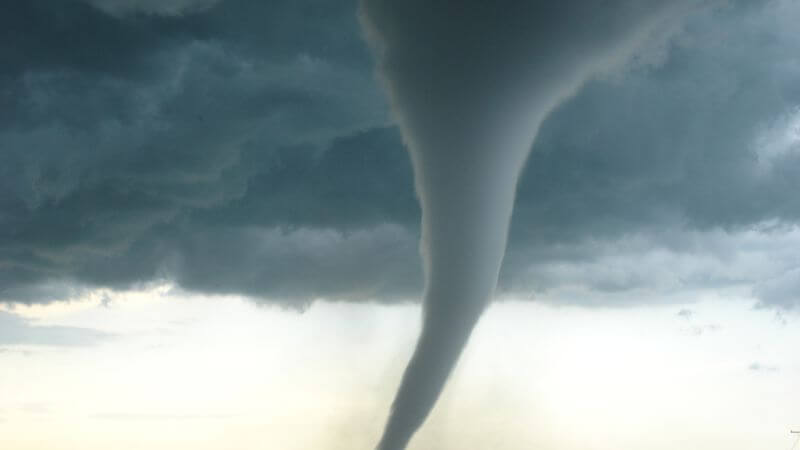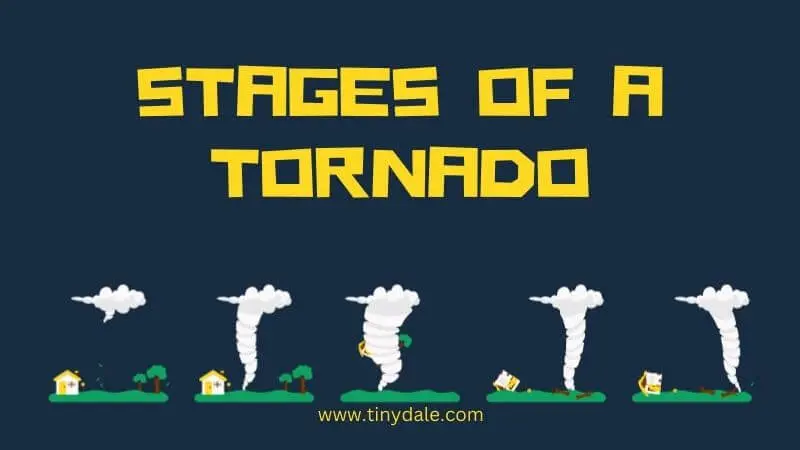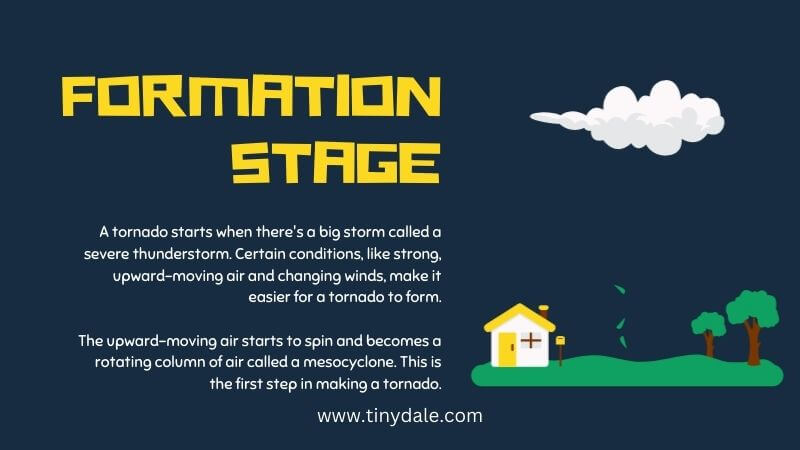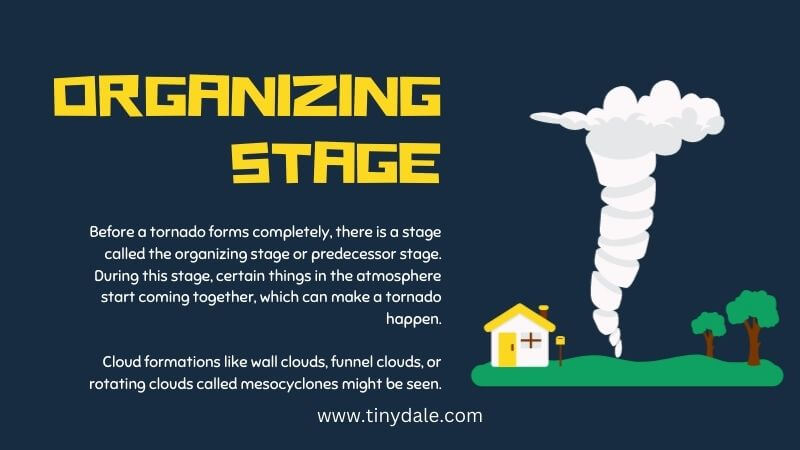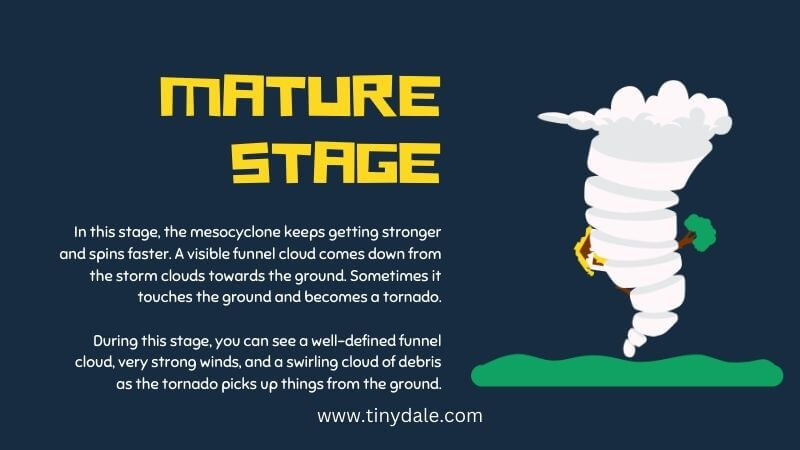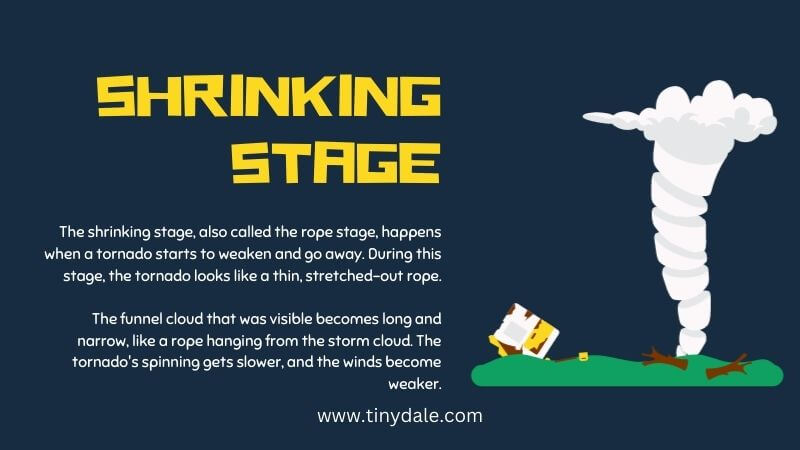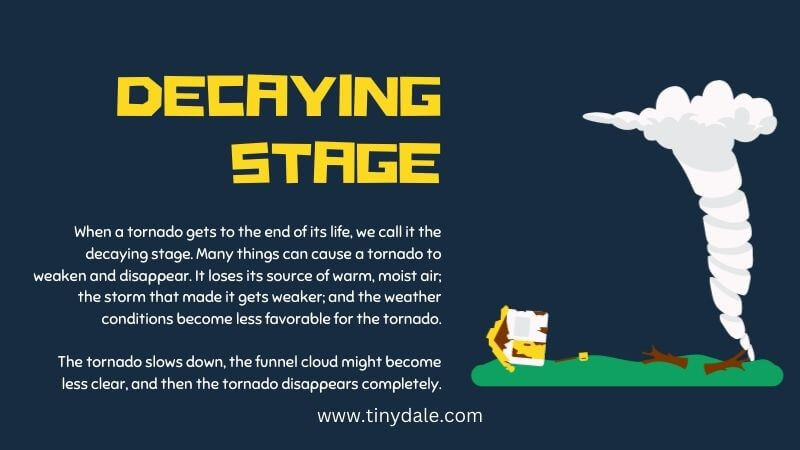We all were fascinated by tornado, storm and other weather facts as children, weren’t we? Well, here are some tornado facts for kids to enjoy reading about and becoming experts in this weather phenomenon!
Bonus: Amazing Pictures showcasing the stages of Tornadoes with Pictures and information in details while you go through the post
What Is A Tornado?
A tornado is a violently rotating column of air that extends from a thunderstorm to the ground. It forms when warm, moist air clashes with cold, dry air, creating strong winds that spiral upward.
Tornadoes vary in size and strength, from thin funnels to large vortices, and can cause significant damage by lifting objects and destroying structures. source
Tornado Facts For Kids
- Twisting Winds: A tornado is a rapidly rotating column of air extending from a thunderstorm to the ground.
- Shape and Size: Tornadoes can vary in size from thin funnels to large, wide vortices.
- Wind Speed: Tornadoes can have wind speeds of up to 300 miles per hour (480 kilometers per hour)!
- Tornado Alley: The central part of the United States, known as Tornado Alley, sees the most tornadoes due to warm, moist air meeting cool, dry air.
- Formation: Tornadoes form when strong winds within a thunderstorm start spinning and create a rotating updraft.
- Destruction: Tornadoes can cause a lot of damage by lifting heavy objects and destroying buildings.
- Scale of Strength: The Enhanced Fujita (EF) scale rates tornadoes from EF0 (weakest) to EF5 (strongest).
- Duration: Most tornadoes only last a few minutes, but some can persist for over an hour.
- Color and Sound: Tornadoes are usually gray or white, and they often make a loud, roaring noise.
- Safety: The best place to be during a tornado is in a basement or an interior room on the lowest floor of a sturdy building.
- Debris: Tornadoes can carry lightweight objects like leaves and sticks for long distances, even across entire states!
- Doppler Radar: Weather radar helps meteorologists detect rotating winds that could indicate a tornado.
- Tornado Chasers: Some scientists and storm enthusiasts study tornadoes by getting close to them using special vehicles equipped with instruments.
- Safety Drills: Schools and communities practice tornado drills to ensure everyone knows what to do in case of a tornado emergency.
Rare Tornado Facts For Kids
- Rainbow Tornado: Tornadoes can appear in different colors, including white, gray, and even rainbow-like hues due to the sunlight scattering through water droplets.
- Smallest Tornado: Tornadoes can be as small as just a few meters wide, while others can stretch over a mile in diameter.
- Tornado Swarms: Sometimes, multiple tornadoes can form at the same time, creating a “tornado outbreak.”
- Tornado Twins: On very rare occasions, two tornadoes can rotate around each other in a phenomenon called a “tornado duet.”
- Tornado Myths: Tornadoes don’t always sound like freight trains, as often described. The noise can vary, and some tornadoes might be quiet.
Additional Tornado Facts For Kids
- Fastest Forward Speed: Tornadoes can travel surprisingly fast, with some moving forward at speeds greater than 70 mph (113 kph).
- Tornado Lightning: Tornadoes can generate their own lightning, known as “tornado lightning,” adding to their intense appearance.
- Ancient Tornadoes: Evidence suggests that tornadoes have occurred on Earth for millions of years, even during the time of the dinosaurs.
Tornado Trivia!
Question: What is the scale used to measure tornado strength?
Answer: Enhanced Fujita (EF) scale.
Question: Which part of a thunderstorm do tornadoes usually form from?
Answer: The updraft or mesocyclone.
Question: What is the central region in the United States known for experiencing a high number of tornadoes?
Answer: Tornado Alley.
Question: What is the name for a tornado that forms over water?
Answer: Waterspout.
Question: Which state in the U.S. has the most tornadoes on average each year?
Answer: Texas.
Question: What is the fastest wind speed ever recorded in a tornado, according to the Enhanced Fujita scale?
Answer: 318 mph (EF5 tornado).
Question: What is the term for a tornado that doesn’t touch the ground and is visible only by its rotating debris?
Answer: A funnel cloud. source
Question: What are the “safe spots” in a house to take cover during a tornado?
Answer: Basements, storm cellars, or small interior rooms on the lowest floor.
Question: Which tool do meteorologists use to track tornadoes and analyze their rotation?
Answer: Doppler radar.
Question: What type of clouds are often associated with the development of tornadoes?
Answer: Cumulonimbus clouds.
Also Read: Cheerful Tulip Quotes
Tinydale is on YouTube, Click here to subscribe for the latest videos and updates.
Follow Us: Facebook | Instagram | Twitter | Youtube | Pinterest

